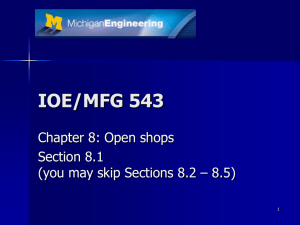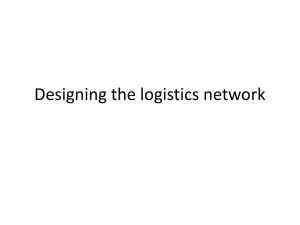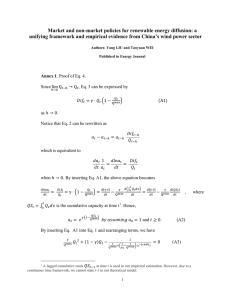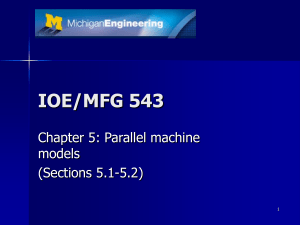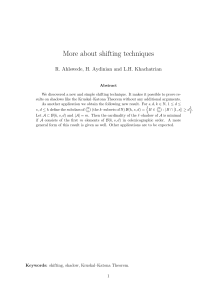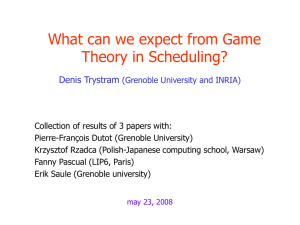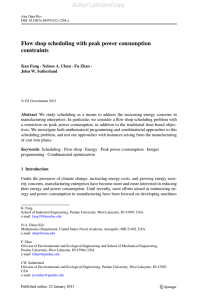10 tips for academic talks Nelson A. Uhan 1
advertisement
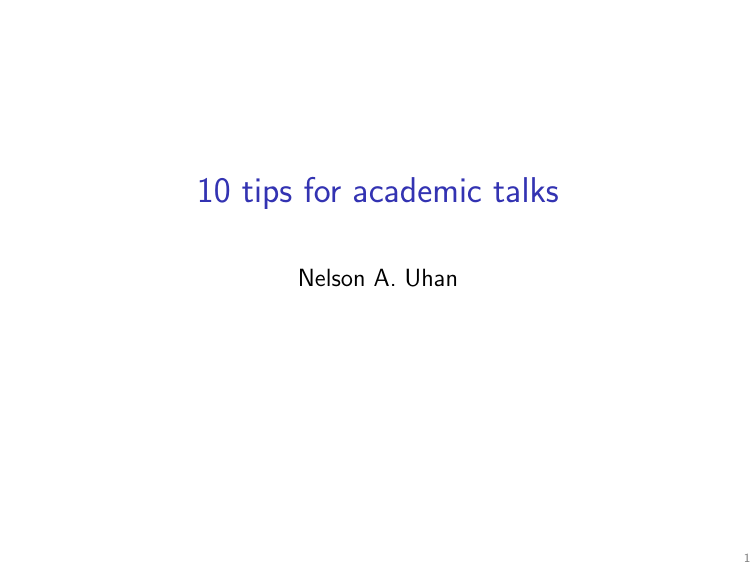
10 tips for academic talks
Nelson A. Uhan
1
Disclaimer
I’m not a master public speaker
I’ve collected some “dos and don’ts” through observation
and experience
This talk is heavily inspired by and borrowed from Matt
Might (http://matt.might.net)
2
1. Know your audience
Find out who you’re speaking to, and aim appropriately
A talk for a general IE audience is different from a talk to
experts in (insert specific subdomain here)
Take your time with introductory material, even if it feels
awkward or insulting (it’s not)
It’s easy to gloss over concepts and details that took us
years to learn
3
2. Practice, practice, practice
Practice is the key to a natural delivery
Rehearse the presentation, don’t memorize the talk
e.g. transitions between topics, intentional pauses
Concentrate on your opening
First impressions are important
Good opening = comfort early on
4
2. Practice, practice, practice
After rehearsing, ask yourself:
Was there a slide/topic I spent too much time on?
Was there a slide/topic I could have done without?
⇒ Expand or cut as necessary
For conferences, I practice my full talk at least 3 times
(When I was a graduate student... 10 times?)
5
3. A talk is about an idea, not a paper
It takes hours of thoughtful reading to digest the average
paper in detail
A talk is typically 15-30 minutes
The talk should present the same idea in the paper, but
on its own terms
The ideal outline for a talk may be very different
from how the paper is organized
The talk should concentrate on the key ideas
Examples are good
6
4. The 40/30/30 rule
First 40% of your talk:
Introduce and motivate your problem
Why is this problem important?
Second 30% of your talk:
Give an overview of your results
Why are these results interesting, important, etc.?
Last 30% of your talk:
For the experts: methods, proofs, etc.
Blow the audience away with your technical prowess
7
5. Slides should not overwhelm the viewer
Too much information on a slide ⇒ brain shuts off
Present information piecemeal
e.g. bullet-by-bullet, node-by-node, equation-by-equation
Highlight important parts
(but use sparingly)
Spread information amongst multiple slides if necessary
Do not cut and paste from your paper
8
Don’t do this
Theorem
Computing the least core value of scheduling games is NP-hard.
Proof.
By the previous theorem, the least core value of scheduling games is
z∗ =
1
1
1
max v (N) − v (S) − v (N \ S) = v (N) −
min v (S) + v (N \ S) .
2 S⊆N
2
2 S⊆N
S6=∅,N
S6=∅,N
Note that the minimization problem above is equivalent to the problem of minimizing
the sum of weighted completion times of jobs in N, with weight wj and processing
time pj for each job j ∈ N, on two identical parallel machines. Sahni (1976) showed
that this two-machine problem is NP-hard, even when wj = pj for all jobs j ∈ N.
9
Do this
Theorem
Computing the least core value of scheduling games is NP-hard.
Proof.
z∗ =
1
max {v (N) − v (S) − v (N \ S)}
2 S⊆N
S6=∅,N
1
1
= v (N) − min {v (S) + v (N\S)}
2
2 S⊆N
S6=∅,N
|
{z
}
P
P2 | |
⇒ Problem is equivalent to P2 | |
NP-complete. [Sahni (1976)]
P
wj Cj
wj Cj , which is
10
6. A picture is worth a 1000 words
Images and animations can convey or illustrate an idea
better than text
If you can use an image instead of text, do it
This takes thought and time
Avoid unnecessary details on images
e.g. scales, tick marks
11
Illustrating with animations and examples
Job is completed when all its operations are completed
Job 1
Job 2
Job 3
Operation type 1
Operation type 2
Operation type 3
Machine 1
Machine 2
Machine 3
C3
C2
C1
12
7. Use math carefully
Math as a language is expressive and precise
Talks are hand-wavy and should focus on intuition
Reading lots of math disengages the reader from the
speaker
Be careful with how you use math
Avoid unnecessary details
Consider changing notation to make it easier to grasp
13
This is not a good way to present math
minimize Cmax
subject to Cmax ≥ Cmn
X X
C00 ≥
p0js x0j0s
j∈J s∈S
Cik ≥ Ci−1,k +
X X
pijs xijks
i = 1, . . . , m; k ∈ J ,
pijs xijks
i ∈ M; k = 1, . . . , n − 1,
j∈J s∈S
Cik ≥ Ci,k−1 +
X X
j∈J s∈S
Sij − Shk ≤ Muhkij − 1
X X
Shk − Sij +
phls xhlks ≤ Mvhkij
i, h ∈ M; j, k ∈ J ,
i, h ∈ M; j, k ∈ J ,
l∈J s∈S
X X
Cij = Sij +
i ∈ M; j ∈ J ,
xirjs pirs
r ∈J s∈S
i, h ∈ M; j, k ∈ J ,
uhkij + vhkij = 1 + yhkij
xhlks + yhkij ≤ 1 + zhlksij
X X
xijks = 1
i, h ∈ M; j, k, l ∈ J ; s ∈ S,
i ∈ M; j ∈ J ,
k∈J s∈S
X X
i ∈ M; k ∈ J ,
xijks = 1
j∈J s∈S
X
xijks =
s∈S
X X
r ∈J s∈S
X
i, h ∈ M; j, k ∈ J ,
xhjks
s∈S
qirs xirjs +
X
X X X
qhls zhlksij ≤ Qmax
i ∈ M; j ∈ J ,
h∈M,h6=i l∈J k∈J s∈S
xijks , uhkij , vhkij , yhkij , zhlksij ∈ {0, 1}
i, h ∈ M; j, l, k ∈ J ; s ∈ S.
14
This is a better way to present math
Overall mathematical program
minimize Cmax
subject to permutation flow shop constraints
concurrent job constraints
peak power consumption ≤ Qmax
variable-type constraints (nonnegativity, binary)
Subsequent slides: one slide per constraint type
15
8. Style matters
Your talk is primarily about what you say, but...
Your slides should be visually appealing
Clean fonts
Lack of gratuitous adornments
Balance of whitespace
Imagery and animations that enhance intuition
Learn to use your presentation software/package well
(e.g. Beamer, PowerPoint, Keynote)
16
9. Questions are not random
Anticipate questions your audience might ask
Some answers belong in your talk
Some don’t, but you can reserve a separate slide
For unanticipated questions, buy time by reformulating
the question in your own words
If an exchange becomes long or hostile, thank the
questioner and suggest taking the discussion offline
17
10. Speak slowly and use your body
You are probably talking too fast
Rule of thumb: at least 1 minute per slide
Be aware of your body language
Stand up straight
Gesture with your whole body
Look at your projected slides, not the computer
Step away from the podium, walk around
Invest in a good presentation remote
18
To summarize...
1. Know your audience
2. Practice, practice, practice
3. A talk is about an idea, not a paper
4. The 40/30/30 rule
5. Slides should not overwhelm the viewer
6. A picture is worth a 1000 words
7. Use math sparingly
8. Style matters
9. Questions are not random
10. Speak slowly and use your body
19

